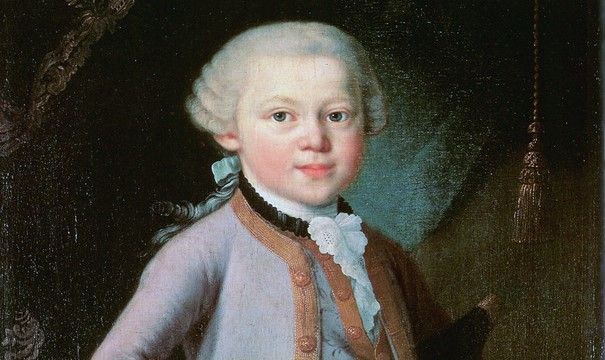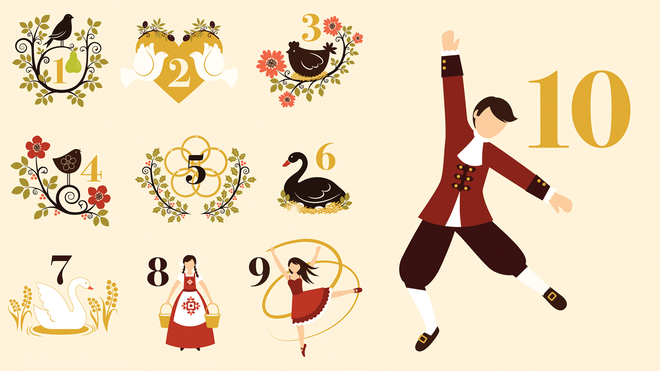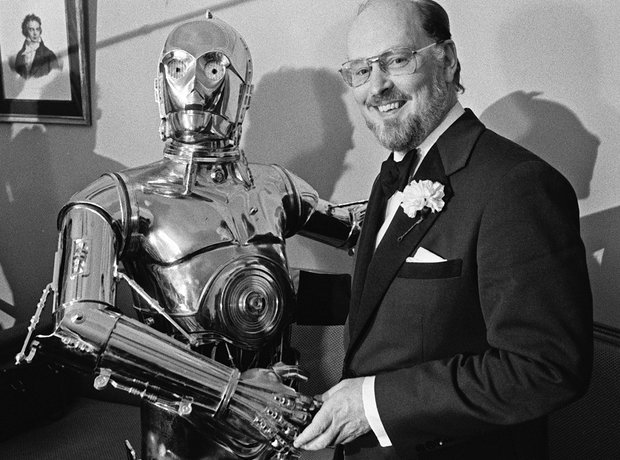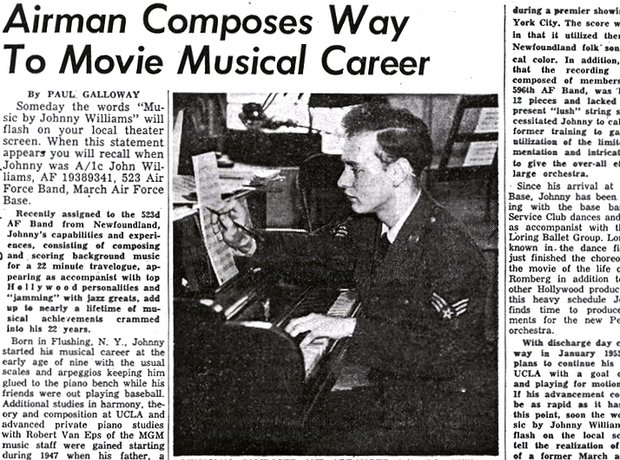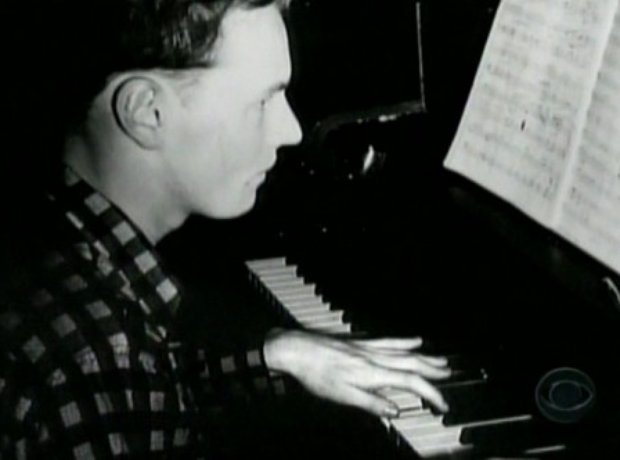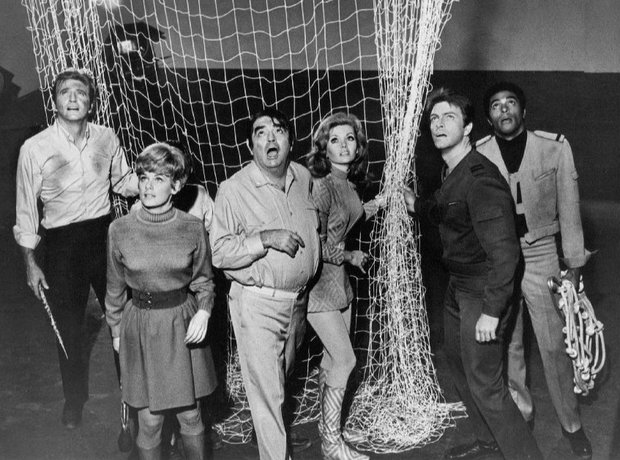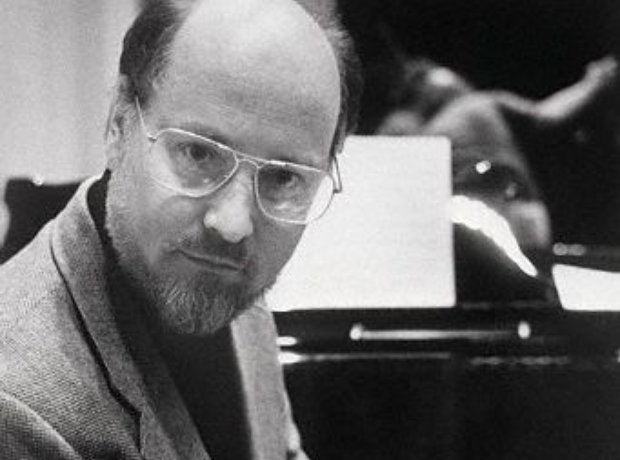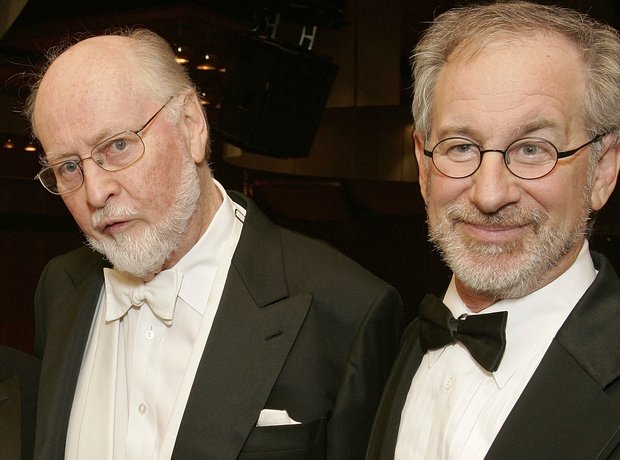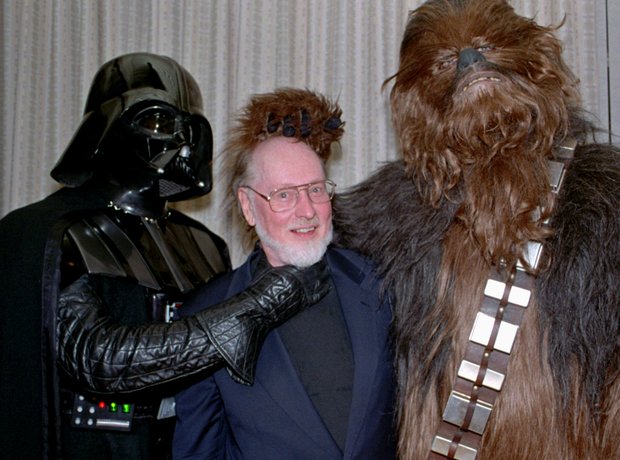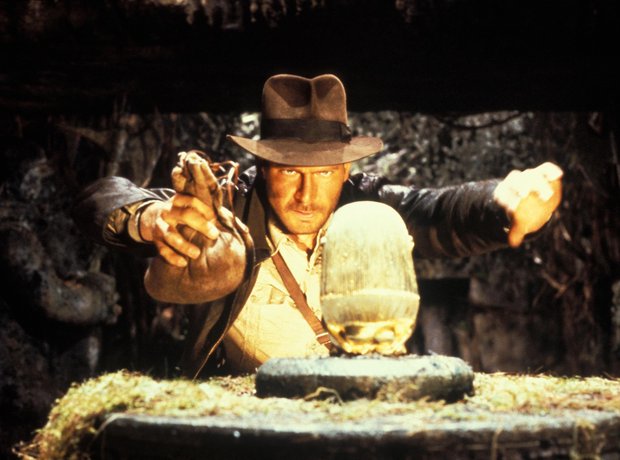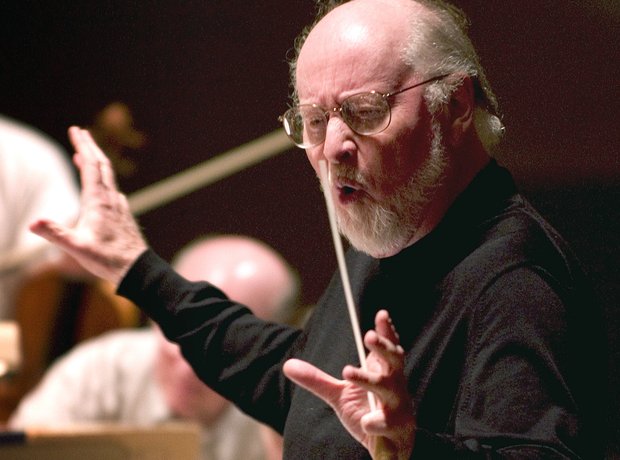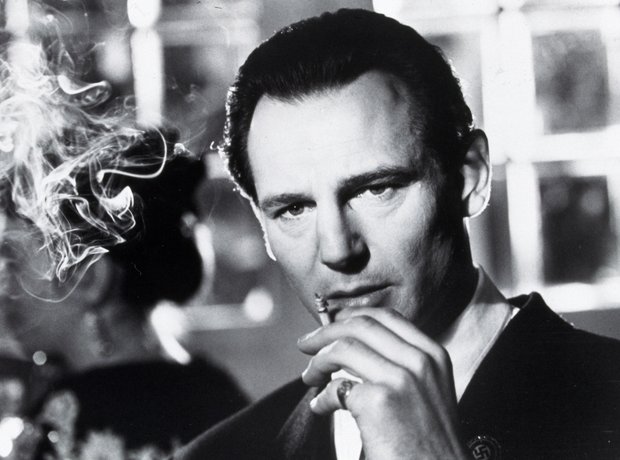... for introducing millions to orchestral music
John Williams receives RPS Gold Medal award. Picture: Royal Philharmonic Society
By Maddy Shaw Roberts, ClassicFM London
‘He has dedicated his life to ensuring orchestral music continues to speak to and captivate millions of people worldwide.’
Internationally treasured composer John Williams, 88, is the recipient of this year’s RPS Gold Medal.
The legendary film maestro, who composed the enduring music for Star Wars, Harry Potter, Schindler’s List and many more, won the coveted award at the 2020 Royal Philharmonic Society Awards, for introducing millions to orchestral music.
His win, one of the highest honours in music recognising outstanding musicianship since 1870, was announced during a digital broadcast on 18 November featuring performances filmed at London’s Wigmore Hall.
Accepting the medal via video, Williams said: “To receive this award is beyond any expectation I could possibly have. For any composer to be able devote his or her life entirely to the composition of music is very fortunate indeed.”
Director Steven Spielberg presented a special congratulatory message to his long-time collaborator via video message, saying: “John, you have brought the classical idiom to young people all over the world through your scores, and through your classical training and your classical sensibilities. You are in the DNA of the musical culture of today.”
In his wonderful introduction to Williams’ win, which was determined by the RPS Board and Council and voted for by RPS members, RPS chairman John Gilhooly said:
“Some of us are born into classical music, never recalling a time without it. Others are drawn to its magic by the spell that orchestras cast in bringing soul, drama and humanity to motion pictures.
“The recipient of this year’s RPS Gold Medal has dedicated his life to ensuring orchestral music continues to speak to and captivate people worldwide in this way. Aged 88 and still at work, he is an international treasure, writing score after score of sophistication and impact, many transcendent of the films for which they were written.”
Elsewhere, cellist Sheku Kanneh-Mason was presented with the Young Artists Award for “captivating listeners worldwide”.
Welsh soprano Natalya Romaniw received the Singer Award, while the Scottish Ensemble received the Ensemble Award for their innovation in their 50th birthday year.
(C) 2020 by ClassicFM London
Unlike many contemporary composers, John Williams is a household name, even among families who aren't classic music buffs. To date, his award stats seem inconceivable, even to the most aspiring of professional composers. They include 25 Grammy Awards, seven British Academy Film Awards, five Academy Awards, and four Golden Globe Awards (and more to come, we would imagine).
A well-published John Williams quote (filmtracks.com) states, "So much of what we do is ephemeral and quickly forgotten, even by ourselves, so it's gratifying to have something you have done linger in people's memories." Based on that statement, this famous musician, composer, conductor, and music producer must be one gratified human being.
John (Johnny) Williams II: The Basics
We can't post an Artist Spotlight without capturing some of the basic biographical details. But, as we know, there is so much more to any human than birth dates and accolades. Therefore, the second section of this post focuses on facts you may not know about one of the 20th/21st centuries' most famous and well-loved composers.
The Early Years
John (Johnny during his younger years) Towner Williams II was born on February 8, 1932, making him almost 90 years wise today. He was born in Queens, New York, to parents Esther (née Towner, hence his middle name) and Johnny Williams. His father was a talented jazz percussionist who played with the Raymond Scott Quintet. Later on, after the family's move to Los Angeles in 1948, his father worked as a recording artist and a studio musician for both radio and films.
Williams's mother was originally from Maine and grew up in a family that owned a department store. Her father was also a carpenter and cabinet maker. As a result, John Williams, the composer, felt his life exemplifies both the musicianship and the strong work ethic that defined his formative years and family culture.
As is the way of many professional composers, Williams quickly became poly-instrumental. He began playing the piano at age six. By the time he left grade school, Williams was proficient on the bassoon, cello, clarinet, trombone, and trumpet. Eventually, Johnny-now-John attended UCLA, where he studied composition.
Williams' later years
In 1951, John Williams got drafted into the military, where he served in the U.S. Air Force Band as a pianist, brass player, and conductor. Upon his release from the service in 1955, he was accepted into Julliard. At first, Williams planned to become a concert pianist but eventually turned his sights to composition. He continued his composition studies at the Eastman School of Music and, upon graduation, Williams began working as an orchestrator in film studios.
That initial post-graduate job led to Williams's career as a world-renowned film score composer. However, it's impossible to narrow down his "best-known works" because the entire list is recognizable, including:
Jaws (1975)
Superman - The Movie (1978)
The Empire Strikes Back (1980)
Raiders of the Lost Ark (1981)
E.T.: The Extra-Terrestrial (1982)
Jurassic Park (1993)
Schindler's List (1994)
Seven Years in Tibet (1997)
Saving Private Ryan (1998)
The first three Harry Potter films (2001, 2002, and 2004)
All of the Star Wars films
(Wikipedia's complete list of compositions by John Williams)
We could go on, but you get the point. He also served as music director and laureate conductor of one of the country's treasured musical institutions, the Boston Pops Orchestra.
In our post, Insights From the World's Best Film Score Composers, we quoted John Williams saying, "I think the biggest single mission perhaps of the filmmakers and myself is to try to seek universalisms in the story, in the music, and in the emotions." (Source: Gramaphone). His laudable career exemplifies John Williams's ability to do just that.
10 Fun Facts
Now, as promised, we'd like to break away from the basic details and leave you with ten fun facts you might not have known about John Williams.
He's been nominated for 52 Academy Awards, making him the second-most nominated person after Walt Disney.
You can hear some of his early professional piano playing in the movies "Some Like it Hot (1959)" and "To Kill a Mockingbird (1962)."
Williams "allowed" Steven Spielberg to play clarinet, which he'd learned to play in high school in the band street scene. The dailyjaws.com website quotes Williams saying that Spielberg "added the right amateur quality to the piece" (sorry, Steven).
He paid his way through graduate music school, working as a nightclub jazz pianist and a bandleader called "Little Johnny Love."
In an interview with businessinsider.com, Williams admitted that he's never seen a single "finished" version of the Star Wars Films.
Technology is not his thing. Williams composes his scores at a desk with a pencil and paper, with his adjacent Steinway piano as a companion. John Williams has this to say about technology, "I have not evolved to the point where I use computers and synthesizers. First of all, they didn't exist when I was studying music, and luckily, mercifully, I have been so busy in the interim years that I haven't had time to go back and retool. And so my evolution, in very practical terms, i.e. piano and pencil and paper, has not changed at all." (Grunge)
John Williams's son, Joseph, was the lead singer of the band Toto, most famous for their songs, "Africa" and "Rosanna."
While best known for his film scores, a composer is a composer through and through. Williams has also composed concert hall performances that include two symphonies and various concertos for horn, cello, clarinet, flute, violin, and bassoon. Watch Yo-Yo Ma performing Williams's Concerto for Cello and Orchestra.
The iconic first three notes of the Jaws theme song (which Spielberg thought were a joke at first) have become the most famous musical introduction in history after the beginning of Beethoven's Fifth Symphony.
Two of his first Academy nominations were for movies you've probably never heard of: Valley of the Dolls (1967) and Good-Bye, Mr. Chips (1969).
At a sharp and still-composing 89 years old, John Williams is a musician, composer, producer, and conductor who deserves every bit of the respect and accolades he's received. We look forward to what this soon-to-be nonagenarian composes next.
